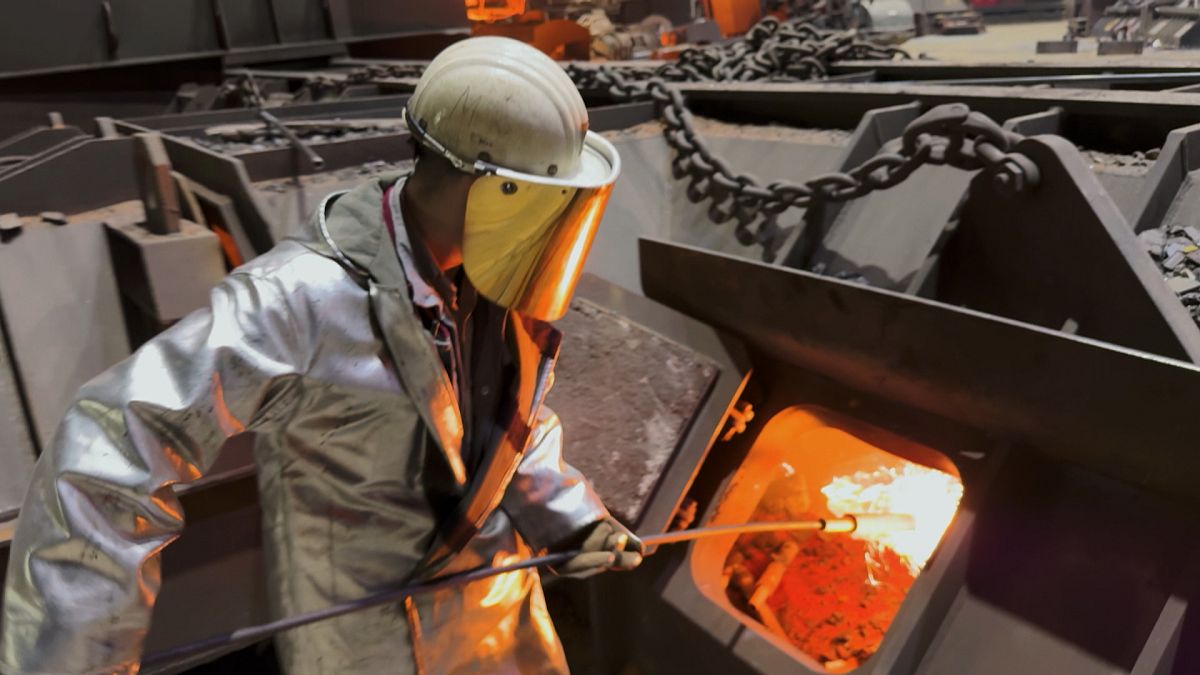Germany’s steel giant ThyssenKrupp wants to cut 11,000 jobs. Europe’s metal industry is in crisis. US tariffs, exorbitant energy prices, global overcapacity, competition from cheap steel from China… The European Commission is trying to save what can be saved – with a ‘Steel Action Plan’.
The European Commission calls its strategy for industrial competitiveness and decarbonisation the ‘Clean Industrial Deal’. Far too much steel is produced worldwide. And now the new US government is also threatening tariffs: 25 percent on all steel and aluminium imports. As a result, there is a risk of international trade flows being diverted away from the USA and towards the European internal market.
Foreign suppliers are trying to conquer the EU market with dumping prices. To prevent unfairly produced cheap steel from breaking the necks of European steel manufacturers, a new protection instrument will be introduced in 2026: CBAM, the EU’s Carbon Border Adjustment Mechanism. Non-European manufacturers of cement, aluminium, iron and steel must pay a CO2 tax on non-sustainably produced goods at the EU border.
In order to make Europe’s industry fit for a sustainable future, the EU wants to mobilise investments of 100 billion euros. There is a lot at stake, not least Europe’s industrial foundations.
Germany wants to be climate-neutral by 2045. This is only possible if steel is no longer produced with coal, but with electricity or hydrogen. The EU Commission is helping with the changeover. Germany’s steel giant ThyssenKrupp is also firmly committed to the goal of ‘green steel’.
Foreman Sati takes me to the blast furnace: Temperature of the red-hot steel soup: almost 1500 degrees Celsius! – US President Trump is raising hell with manufacturers. With 25 per cent tariffs, steelmakers around the world are sweating. ThyssenKrupp sells little steel in the USA. But if third countries from Asia, Africa and the Middle East can no longer sell their steel in the USA, Europe faces the threat of a steel glut.
ThyssenKrupp spokesman Mark Stagge: “First and foremost, we must protect ourselves from unfair import practices. We have 550 million tonnes of overcapacity in the world every year. We need an effective CO2 border adjustment. And we need competitive energy costs at national and European level.”
IGM trade unionists have set up a vigil in front of Gate 1 of the Duisburg steelworks. Erol Kücükarslan, the shop steward: “Our Executive Board must get the idea of cutting 11,000 jobs out of its head. – And what I would like to pass on to Europe: ‘Green steel’, which is produced using renewable energy, should be promoted more quickly.”
Erol warns of deindustrialisation: “If we were to lose industry now, after mining, that would be a disaster for Germany and Europe.” The EU Commission’s Steel Action Plan is therefore tough: Protective tariffs and quantity restrictions for dumping steel!
At the German Economic Institute, I meet Galina Kolev-Schaefer, Professor at the Cologne University of Applied Sciences and an expert on international trade policy: “The global markets are flooded with steel from the coal-based route – and thus harmful to the climate,” recalls Kolev-Schaefer. “The European Commission is therefore introducing a border adjustment mechanism, which means that from next year there will be payments for CO2 emissions from steel imports.”
It takes a lot of energy to produce ‘green steel’. Where should it come from? Kolev-Schaefer: “To achieve this, we need an accelerated expansion of renewable energies and an expansion of the electricity grid towards southern Europe!”
And the problem of US tariffs? “This is hitting the European steel industry hard,” says Kolev-Schaefer. “Not only because the USA accounts for around 20 per cent of the European steel industry’s exports, but also because the European market is increasingly flooded with steel from third countries due to the US tariffs.”

